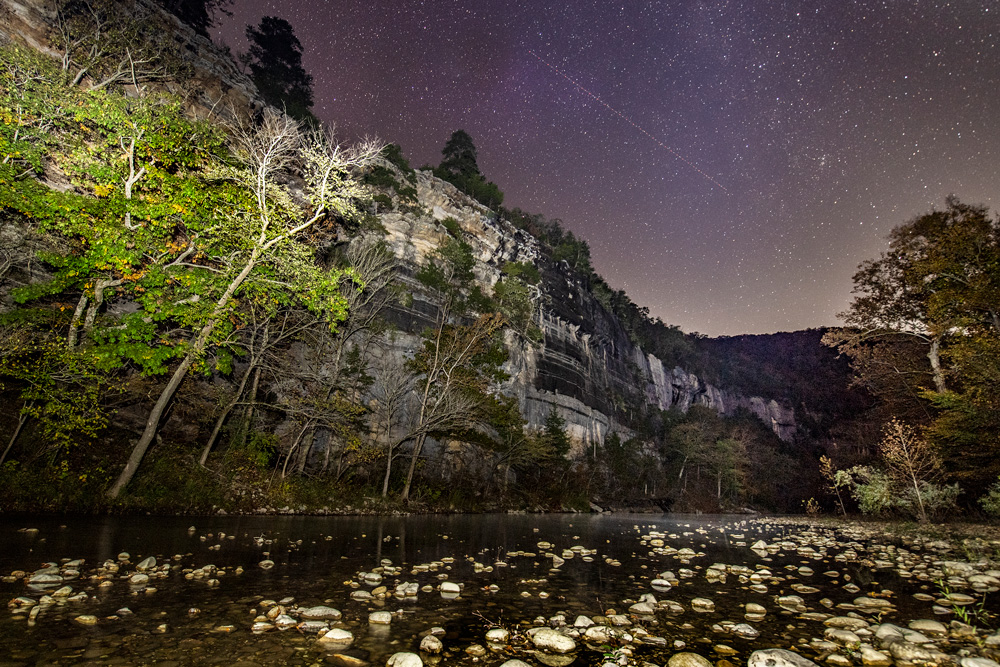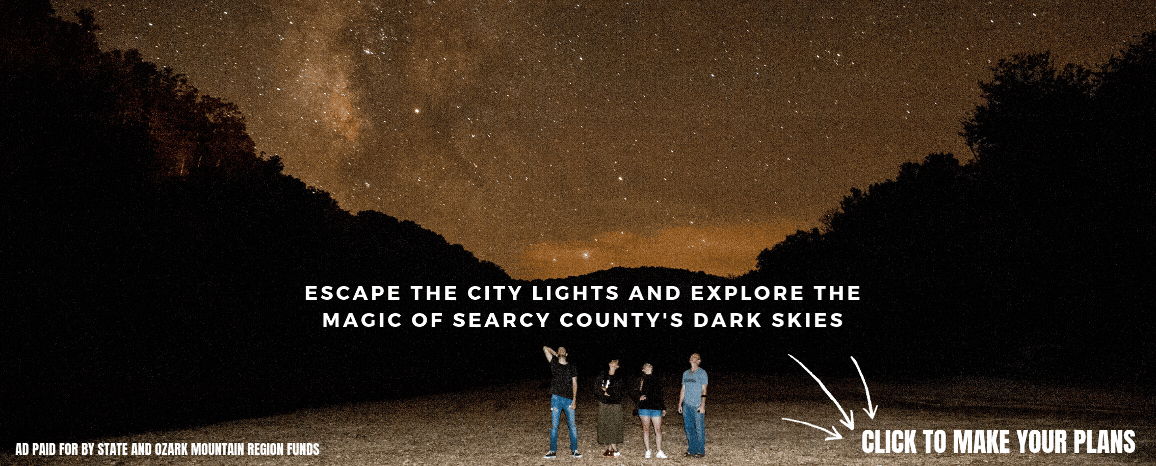Recent restroom and facility lighting changes at the Buffalo National River aim to preserve the area’s naturally dark skies. In 2019, the park was designated as an International Dark Sky Park (IDSP) by the International Dark-Sky Association (IDA). This status requires the park to implement responsible outdoor lighting practices to protect the night sky, setting an example for local communities and visitors to preserve this natural resource. The park also offers various night sky programs throughout the year, which are listed on their calendar of events.
National parks serve as more than just spots for hiking or camping—they offer spaces for spiritual renewal and solitude. Buffalo National River provides opportunities for this through its unspoiled forests, free-flowing waters during the day, and pristine, unpolluted skies at night. The natural night sky is increasingly endangered by artificial light, similar to threats facing wilderness and free-flowing streams. Yet, this challenge can be addressed with mindful use of artificial lighting.
The park’s goal is to create a space where visitors can find relaxation and a sense of wilderness, untouched by modern life both day and night. To achieve this, the park emphasizes its unique night sky resource and offers new educational programs to enhance public appreciation. Buffalo National River is proud to be the first park in Arkansas with IDSP designation. For more information on protecting night skies, visit the National Park Service’s Night Skies website.
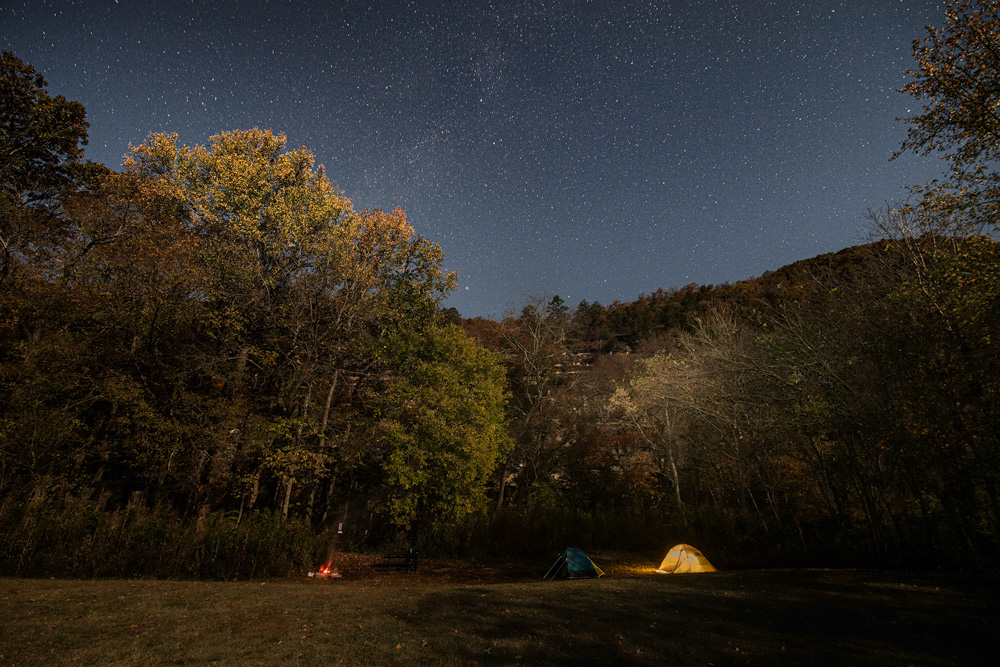
Effects of Light Pollution
Light pollution has multiple negative effects, from wasting energy to disrupting natural ecosystems and human health. The “diurnal cycle” of night and day is integral to the biological rhythms of all living organisms. Artificial lighting can disrupt these cycles, often in unexpected ways, highlighting the need for strategic and mindful use of light.
For example, light pollution can deter female sea turtles from nesting in artificially lit areas. Even more concerning, newly hatched sea turtles may become disoriented by artificial lights along the shore, making it difficult for them to find their way back to the ocean.
Closer to the Buffalo River, artificial lighting impacts fireflies, which are a beloved part of summer evenings. Fireflies use specific flashing patterns to attract mates, but studies have shown that artificial light reduces the frequency of female fireflies’ responses to males, leading to lower reproduction rates.
Artificial light can also affect plant life cycles, bat travel patterns, zooplankton feeding behaviors, bird migration, and amphibian mating. It has been found to interfere with human health as well. Exposure to artificial light disrupts circadian rhythms—the body’s internal clock that regulates sleep patterns. Melatonin, a hormone tied to this rhythm, is essential for immune and reproductive health and helps regulate blood pressure. Decreased melatonin production due to artificial lighting has been associated with a heightened risk of conditions like breast and prostate cancer, diabetes, obesity, and depression, according to the American Medical Association.
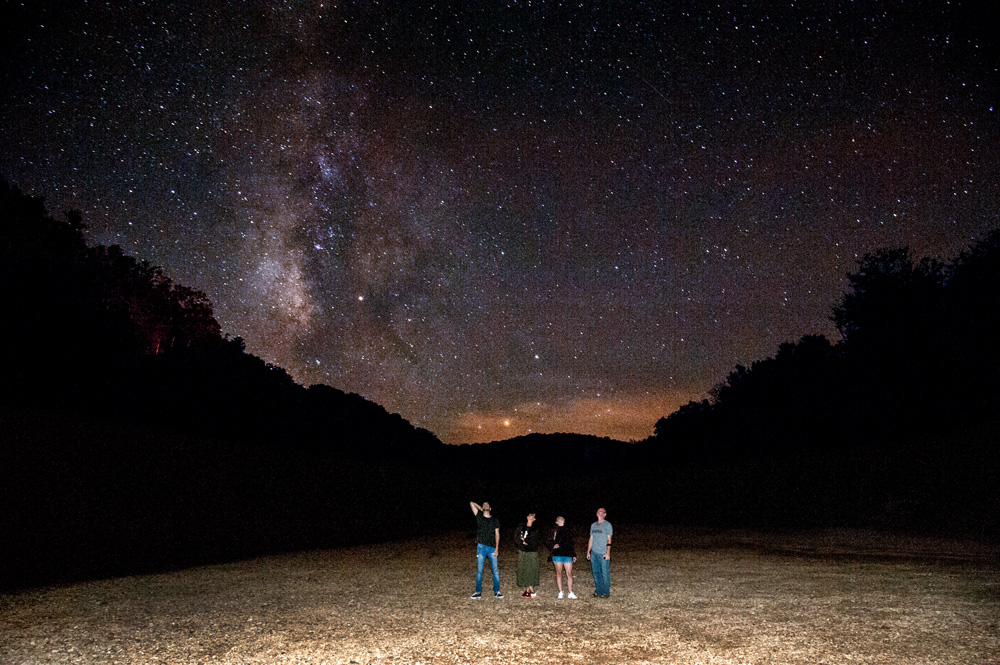
What You Can Do
There are simple steps individuals can take to minimize the effects of artificial light at home or in the workplace. Indoors, it’s recommended to reduce exposure to “blue light,” a part of the light spectrum that impacts hormonal responses. Apps are available that reduce blue light from screens after sunset. Amber night lights and warm, dimmable lights can also help maintain a healthier nighttime environment.
Outdoors, four key principles can reduce light pollution: light only when needed, where needed, using the minimum amount necessary, and choosing the warmest light color practical. Lights should be turned off when not in use, or controlled with motion sensors or timers. Shielded fixtures that direct light downward minimize unwanted glare and skyglow. Using amber-colored bulbs can help preserve night vision and reduce harmful blue light exposure.
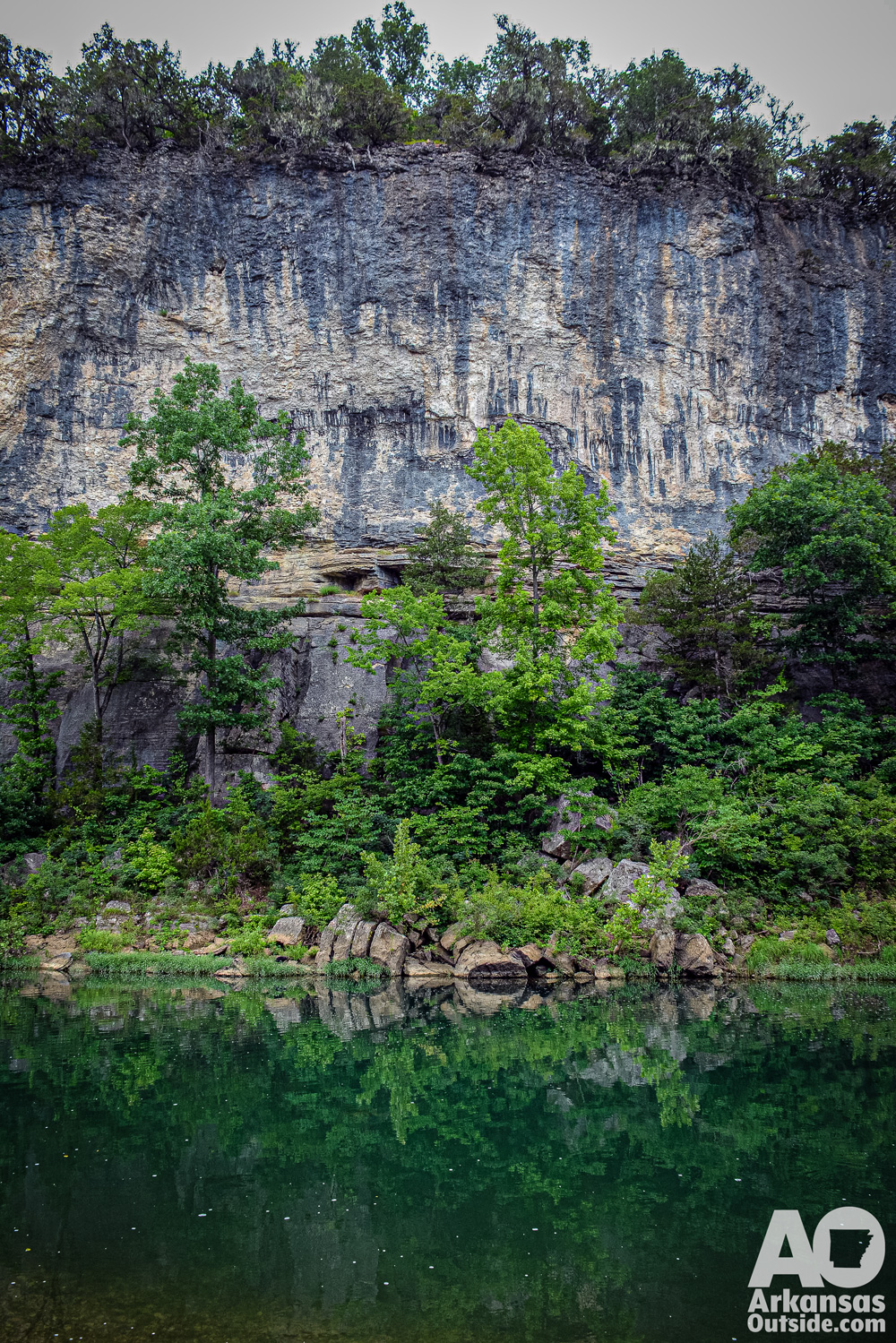
Events & Programs
Buffalo National River offers ranger-led night sky programs at Buffalo Point and Tyler Bend during the summer months. Visitors interested in attending can check the park’s calendar of events or call the Buffalo Point Ranger Station at 870-449-4311 for more information.
Lighting Changes in the Park
To protect the natural night sky, Buffalo National River is making several lighting adjustments. All interior restroom lights are being converted to motion sensor activation. Additionally, the park has dimmed its lights and replaced traditional bulbs with amber-colored ones, which help preserve night vision and reduce light pollution compared to standard LED bulbs. Shields are also being installed on larger light fixtures, such as those on utility poles, or they are being disabled when possible.
The International Dark-Sky Association
The International Dark-Sky Association (IDA), founded in 1988, is a global leader in advocating for the protection of night skies. The organization educates the public about responsible lighting practices and works to preserve dark-sky environments. Currently, there are over 50 International Dark Sky Parks (IDSP) worldwide. According to the IDA, these parks offer “exceptional or distinguished” starry nights and are protected for their scientific, natural, educational, cultural, and recreational value. More information about the IDA and IDSP sites can be found on the IDA website.
(All photos other than the Tyler Bend photo courtesy of the Arkansas Department of Parks, Heritage and Tourism)



